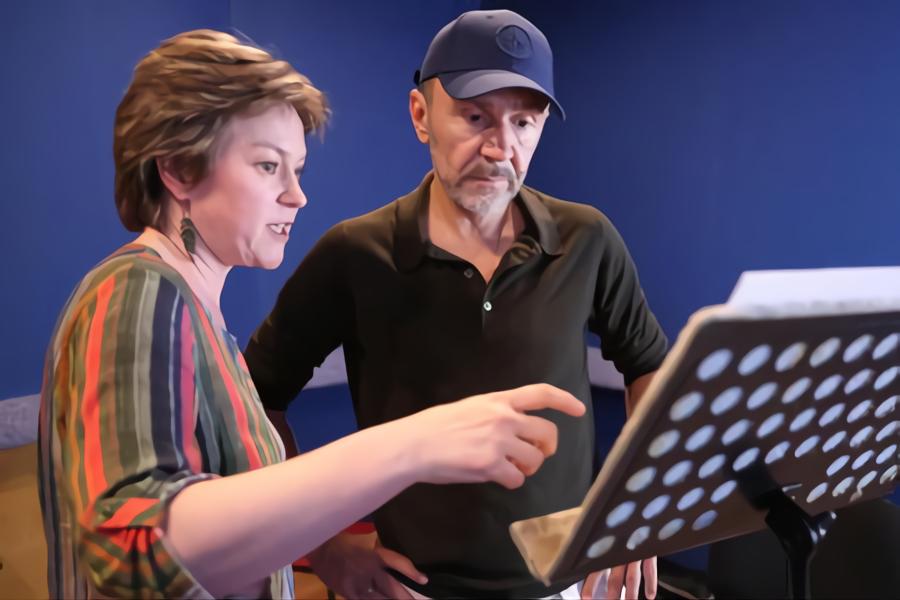
When you’re watching a movie or a commercial, you might hear disembodied voices.
Have you considered that what you’re hearing is a voice-over? They show up in all forms of media – whether for entertainment or educational purposes.
Voice-over is a production technique where a person records voice for off-screen use. As such, voice-over is being used for movies and television.
That said, it also has its place in smartphones and other modern-day informational services.
If you turn on USA Channel, you’ll notice that it has a voice-over, too. Just like most people, you probably got annoyed by it. So, I’d assume it got you thinking, why does USA channel have a voice-over?
I have some answers for you – so, read on!
Why Does USA Channel Have Voice Over?

To help you understand why USA Channel has it, I first have to discuss why any channel has a voice-over.
Here’s the thing:
Voice-over is produced primarily for blind and visually impaired people. During the gaps in the dialogue, the voice-over describes what is happening on screen.
I would assume that this can pretty much explain why a USA Channel – like many others – has a voice-over:
To help blind and visually impaired people keep up with the content on TV.
But other than that, It’s also there to give you a complete experience while watching TV content.
How Do I Turn Off Narrator On USA Channel?
You could’ve sworn that you turned off the narrator on your TV – but somehow, it still works on a USA Channel you’re watching.
So, why is there a voice-over on my TV, you ask? And more importantly – how can you turn it off again?
Well, you can follow these few steps, and you will turn it off:
- Select “Settings” from your device’s home screen.
- Select “General.”
- Select “Accessibility.”
- Select “Audio Descriptions.”
- Set the toggle switch to “Off.”
I hope that these steps have helped. But if you’re still having problems, contact the employees on the USA network in question – and see what they tell you.
And if you want to know the difference between a voice-over and narration, keep reading. I have a bit more info for you!

What Is The Difference Between Voice Over And Narration?
A person that’s speaking but not being seen during a video presents a voice-over. This person is in charge of emphasizing, explaining, or adding context to what the viewer is seeing.
It’s often equated or confused with narration – although the two are not the same.
Videos of instructional, informational, and educational nature are generally more likely to use non-narration voiceovers. On the other hand, entertaining videos will more likely use narration.
That’s a pretty good real-world example of the difference between voice-over and narration. Oh, and it’s worth noting that every narration is a voice-over – but not all voiceovers are narration.
You’ll need to record voiceovers if you make videos – especially explainer videos.
I bet you’re curious why a good voice-over is essential for your video. Don’t worry; I’ve got an answer for that, too – so, read on!
Why Is A Good Voice Over Important For Your Video?

So, now that I answered the main question – why is USA narrating critical visual elements – it’s time to see how big of a role voiceovers play in the world of TV.
Some people believe that the audio of a video is less important than the visual component. But that’s not the case, though.
The majority of watchers are more likely to stop watching a video with poor audio than a video of lower resolution quality.
In fact, according to a recent study of video viewing patterns, more than 25% of video viewers cared more about the audio. They watched a video all the way through because the audio was good.
That number was a bit higher compared to those who claimed professional video quality was an essential factor for them.
So, it’s safe to say that excellent audio isn’t just important – it’s necessary to keep your audience interested and involved.
Voice Over History: Origins & Early Beginnings

Voice-over work began at the same time as the invention of the radio, which was more than a century ago. It was primarily used for reports at the time – the weather forecast, for example.
That also indicates that voice-over thrived in the world of radio – which, as you know, dominated home entertainment for decades.
Even when movies with sound became available, audiences would see voice-over most often in animation. One example of the period is the Walt Disney classic Steamboat Willie.
It was one of the earliest animated shorts to have any voice-over!
Soon Warner Bros followed suit with their animation. It featured the voice of Mel Blanc – one of the earliest and most famous voice actors.
Non-animated films would enjoy voice-over, which was first seen in newsreels of the era. By the 1940s, voice-over had become more common in cinema, particularly in the noir genre. Narration became as common as dark lighting and “femme Fatales.” That’s one example of voice-overs in this genre.
Automated dialogue replacement was also provided by voice-over for filming. It was particularly noticeable in Italian films – which always dubbed their dialogue in post-production.
However, automated dialogue replacement has been used in a variety of films. Its use became commonplace – and is now used in filmmaking.
Voice-Over Today

By the 1960s and 1970s, the world of voiceovers had matured and refined into what we know today.
While they’re still used in movies and radio broadcasts, voice-overs were also introduced into the world of television. Commercials were the most common source of voice-over – although they could be seen on regular programs, particularly the news.
Movie trailers – as in, TV advertising of the latest motion pictures – became widespread by this point. In this area, voiceovers received a big boost and became well-known in pop culture.
Also, animated television shows were more popular in the 70s and 80s, meaning more work for voice actors.
Aside from ads and radio, these actors now had extra opportunities to work and improve their skills. One of the recognizable voices of the day, Casey Kasem, built a career out of voice acting.
By the 90s, voice acting had become as popular and valuable as traditional acting.
To add to it, there was an increase in animated films during the last two decades. And while they’re primarily in 3D now, they still need voiceovers.
Some performers work almost only with animation. Others offer their voices to a wide range of videos and audio-only projects.
And then, there’s today:
It’s evolved into a sort of freelance marketplace.
Someone could get employment from all around the world and contribute their voice – and they could do all that without having to enter a studio.

Final Words
And there you have it. I’m hoping that I covered everything you wanted to know – and more. Because knowledge is power, and you deserve to “upgrade” it daily.
Even if It’s good for some people to have the voice-over on, I know that it can be annoying for others. Now that you understand why USA Channel has a voice-over and how to turn it off, you can watch anything you like without unnecessary interruptions.